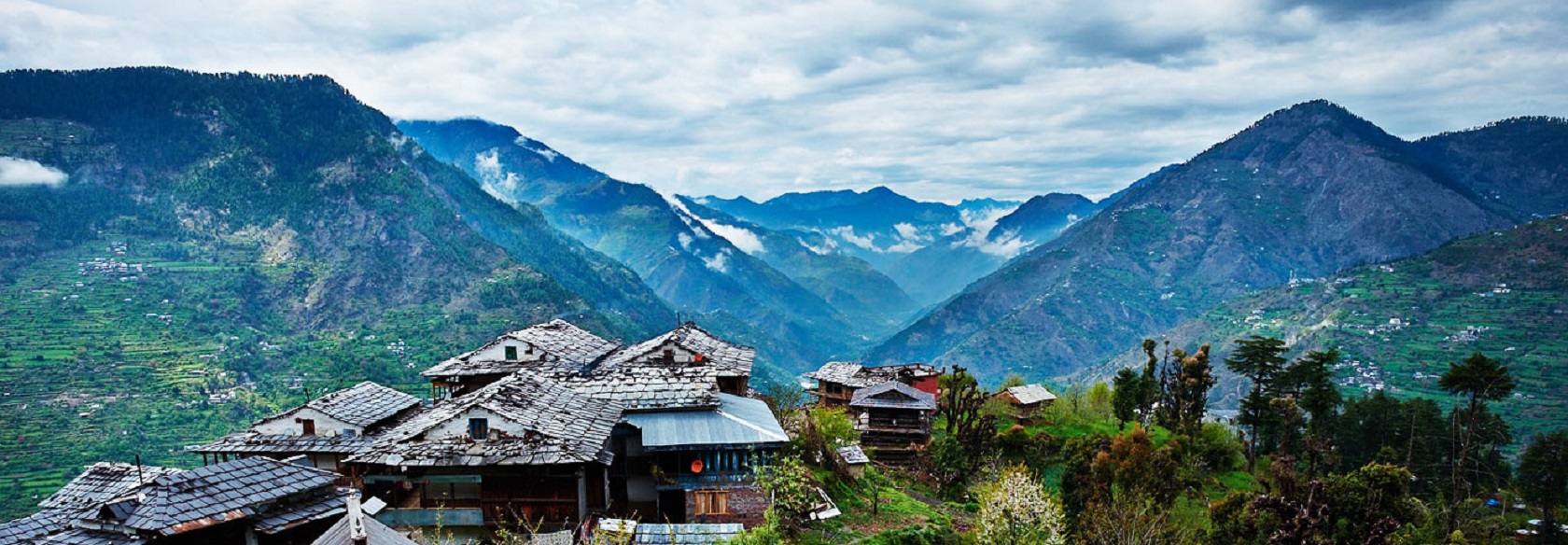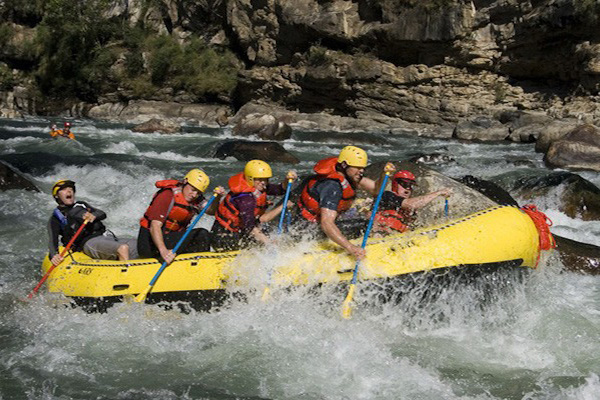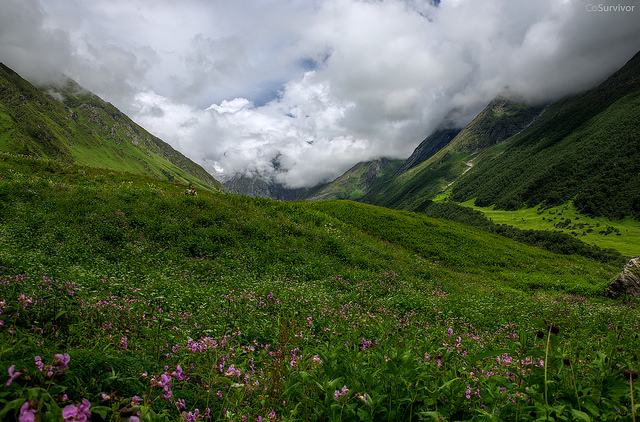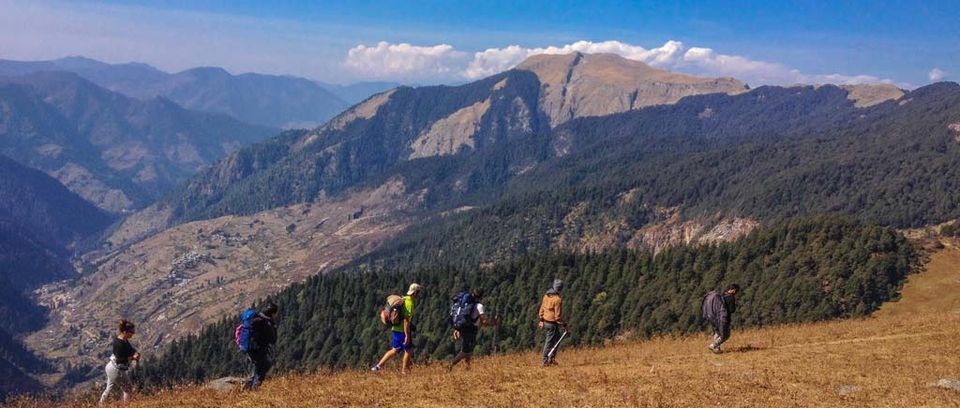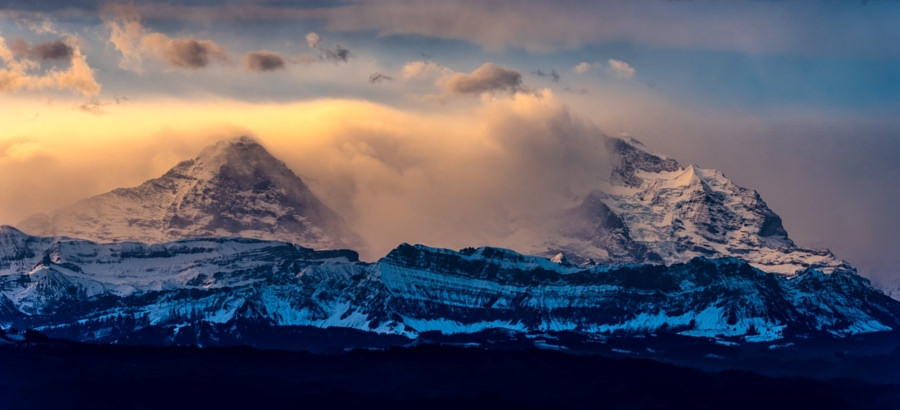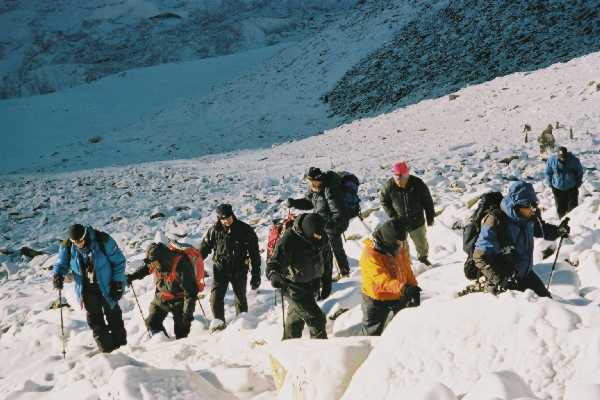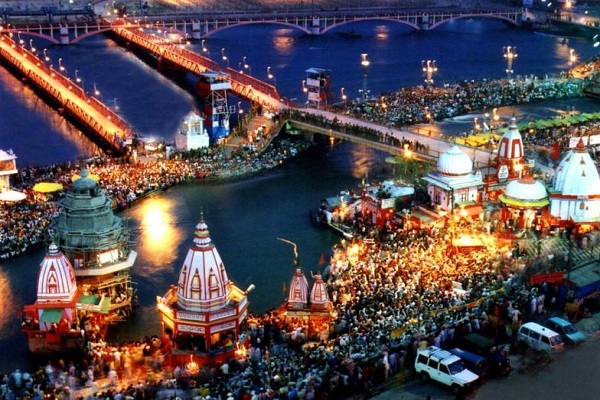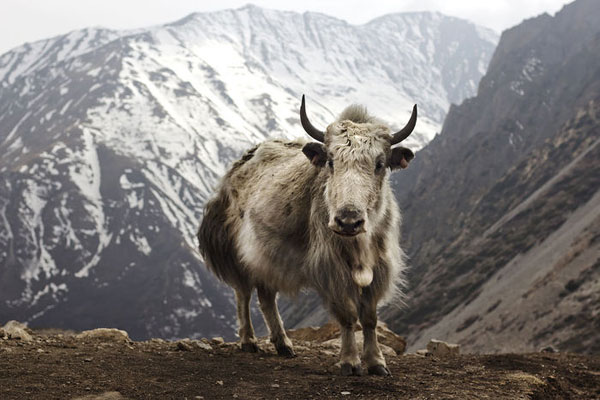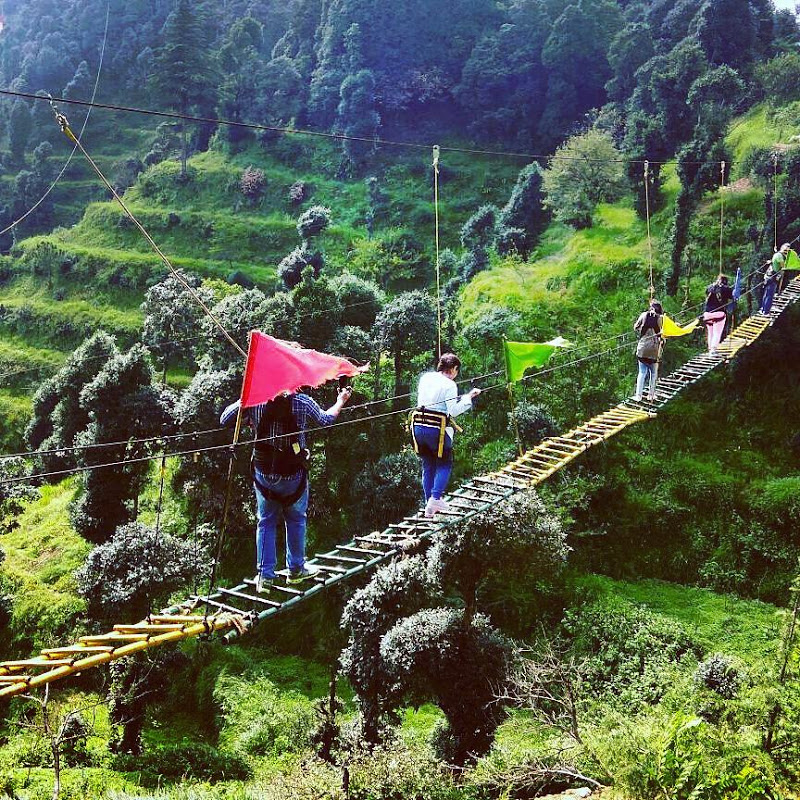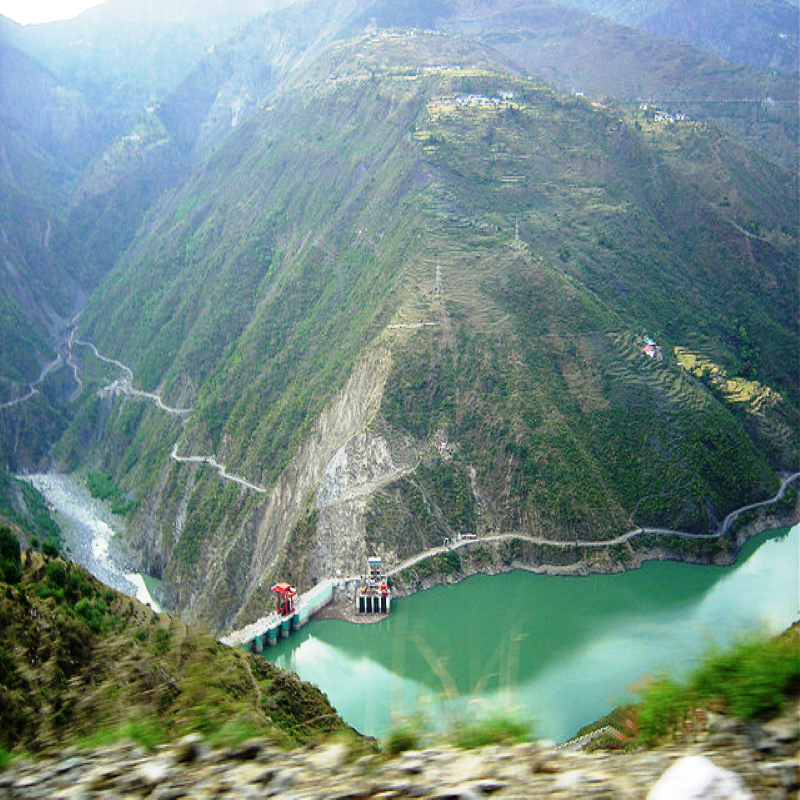Introduction
Major Himalayan Rivers: Indus, Sutlej, Ganga, Yamuna, Brahmaputra
Major Himalayan Regions: Indian Himalayas, Nepal Himalayas, Tibetan Himalayas And Bhutan Himalayas
Famous Peaks: Mount Everest, Kunchenjunga, Nanga Parbat
Etymologically Himalaya means "abode of snow" in sanskrit {from hima "snow", and aalaya "abode"}. The correct name for the range is Himalaya, though the plural Himalayas is often used. The Himalaya stretch across five nations Pakistan, China, India, Nepal, and Bhutan. It is the source of two of the world's major river systems — the Indus Basin and the Ganga-Brahmaputra Basin. An estimated 750 million people live in the watershed area of the Himalayan rivers, which also includes Bangladesh. The Himalaya is a mountain range in Asia Separating the Indian Subcontinent from the Tibetan Plateau. By Extension it is also the name of the massive mountain system which includes the Himalaya proper, the Karakoram, the Hindu Kush, and host of minor ranges extending from the Pamir Knot.

Himalayas People & Tribes
The Inhabitants And The Migrants Bhutiyas Of BhutanThe Hindu epics and Puranas refer to the original inhabitants of the Himalayas- the Kulinds, Kiratas and Kilinds, Kiratas and Kinnars and later texts mention the Khasas and the Darads. Today three ethnic types constitute the Himalayan population: Negroids, Mongoloids and Aryans.
From very early times there have been migrations into the Himalayas and within it. Spiritual quest motivated a few to migrate there, and a small minority responded to the call of these mountains to test their own endurance and will power. Pursuit of profit propelled others. Reasons of state dictated the posting of garrisons even in remote, desolate areas. All these factors combined over a period of time to change significantly the complexion of the local populace. There have been waves of migration from Nepal to Sikkim and Kumaon, for instance, and from Tibet. At present it is extremely difficult to separate the different racial strains.
Himalayas People & Tribes

Himalayan Mountain Range
The Himalayas is one of the youngest mountain ranges in the world. Its revolution can be traced to the Jurassic Era (80 million years ago) when the world's landmasses were split into two: Laurasia in the Northern hemisphere, and Gondwanaland in the southern hemisphere. The landmass which is now India broke away from Gondwanaland and floated across the earth's surface until it collided with asia. The hard volcanic rocks of India were thrust against the soft sedimentary crust of Asia, creating the highest mountain range in the world.
Himalayan Mountain Range

Himalayas Rivers
Rippling along rough surfaces and the beautiful meadows, the numerous rivers that dot Indian mainland are central to our history as well as to Indian mythology. The main rivers of the Himalayas group are the Indus, the legendary Ganga and the Brahmaputra. These rivers are both snow-fed and rain-fed and therefore perennially flow throughout the year. Himalayan rivers discharge about 70% of their inflow into the sea. This includes about 5% from central Indian rivers. They join the Ganga and drain into the Bay of Bengal.
Himalayas Rivers
There are so many things to know, so let's begin. The Himalayas are not merely a geographical feature, a range of mountains; they epitomise a people's civilisational identity that goes back to the dawn of history. If these majestic mountains were not there, the rain clouds sweeping up from the Indian Ocean would have passed over the Indian subcontinent into central Asia leaving it a burning desert.
"The Himalya, the king of the mountains, five and thousand league in extent at the circumference, with its ranges or eight hundred and forty thousand peaks, the source of five hundred rivers, the dwelling place of multitudes of mighty creatures, the producer of manifold perfumes, enriched with hundreds of magical drugs, it is seen to rise aloft like a cloud in the centre of the earth." In fact, a text called the Sama Veda (Sam Veda) does describe the mountain ranges to be the centre of the earth. To the sage's description may be added that these ranges are the youngest in India and one of the youngest mountain systems of the world. With many peaks yet to be christened, these mountain ranges have also given birth to many heroes who have scaled its heights.
Sub Ranges And Hills
The Greater Himalayas is further divided into two major sub ranges in Indian Subcontinent known as Sub-Himalayan Range and Lower Himalayan range or Mahabharat Range. These two major mountain ranges of Great Himalayas are home to many highest peaks,glaciers hill stations, river valleys, flora and fauna. Sivalik Hills is youngest mountain range of the Himalayas and known for its Shivalik Fossil Park, Doon valley and world famous Corbett National Park.
Highest Mountain Peaks
The Himalayan mountain range contains hundreds of mountain peaks including the planet’s highest peaks,Mount Everest. Indian Himalayan mountain range the Karakoram ranges,Garhwal Himalaya and Kanchenjunga range are home to tallest summit in India known as Kanchenjunga, Nanda Devi and Kamet. Kanchenjunga is the highest mountain peak in India with an elevation of 8,586 m (28,169 ft) in the India-Nepal border.
Himalayan River Valley
Himalaya region is home to some of the world’s major river such as the Tsangpo-Brahmaputra,the Indus and holiest river the Ganges all rise next to Greater Mount Kailash of the Himalayas. Lake Manasarowar and Lake Rakshastal are the two major source of these mighty rivers of India, located near to Mount Kailash- a sacred place of major religion of Hinduism, Buddhism and Jainism. The Himalayan river valley offers breathtaking views of the majestic Himalayan foothills, snow cladded mountain and hills covered with a carpet of flowers in Valley of Flowers National Park. Other major rivers of the Himalayas are the Sutlej River,Brahmaputra River and Karnali River, a tributary of the Ganges river.
Great Himalayan Lakes
highest peak of the world
The mountain chain dotted with hundreds of high altitude and low elevation lakes,fed by Glacier of Himalaya. Many of Great Himalayan lakes are fresh water lakes nested in the frozen mountains and high hills. Major glacial lakes in the Himalayas are Lake Manasarowar and Lake Rakshastal, along with some of high altitude frozen lakes of Sikkim Cholamu Lake,Gurudongma lake and Frozen lake of Tawang.
High Altitude Mountain Passes
All the major dangerous, adventures and high altitude mountain passes are located in the great Himalaya ranges, These high mountain passes at an elevation of 5,608 m (18,399 ft) such as Dungri la pass, Khardung La pass and famous Chang La pass play ‘s very important role in trade, travel,war and migration. These mountain passes offers some of the highest motorable road in India, Mana pass is the highest elevation road in the world.
Himalayan Wildlife
The Himalayan Wild Habitat and Conservation provides shelter to India’s unique and rarest wild animals such as endangered snow leopard, Himalayan tahr,beautiful Red panda and Himalayan Black Bear. Wildlife in the Himalayan Region offers the treasure of India in terms of beauty flora, renowned fauna and amazing Avifauna, includes Himalayan Quail,Western Tragopan, Black-lored Tit and Cheer Pheasant.The bird of prey found in the region are the Golden Eagle, the Lammergeier vulture Mountain Hawk Eagle and majestic Himalayan Griffon Vulture,an Old World vulture.
National Park And Sanctuaries
The Himalayan region contains some of the major India’s national parks and Wildlife Sanctuaries such as Great Himalayan National Park, Khangchendzonga National Park,Corbett national park and Hemis national park along with sanctuaries like Kedarnath Wild Life Sanctuary, Mountain Goat Sanctuary,Fambong La Wild Life Sanctuary and Kugti Wildlife Sanctuary.These Wildlife parks are home to nearly around 100 of mammals, 181 birds, 10 reptiles, 9 amphibians, 11 annelids, 17 mollusks and 1000 of insects along with variety of plant life.
Himalayan Adventures Sports
The Himalayan states and mountain region is known as the favorite spot for the all season adventure sports such as Skiing, Paragliding, Trekking, White Water Rafting and mountain climbing. Trekking and Hiking in The Great Himalaya Trail is one of the best experience to have in the longest and highest alpine walking track in the world.
Natural Beauty of Himalaya
The Himalaya is one of the most beautiful place in India to explore the gift of nature, its highest peak, Snow Clad Mountains, carpet of flowers and sun rise, sunset through the mountains offers a delightful experience. Snow Clad Mountains of Himalaya is one of the 20 must see places in India along with the amazing valley of flowers in Uttarakhand. The outstanding natural beauty and endangered and endemic animals of Himalaya makes it one of the most visited tourist attraction of the country.
Himalayan Ayurvedic Herbs
The Himalaya mountain region is famous for its Ayurvedic Herbs and traditional cure for different disease. Himalayan Ayurvedic products provides natural and alternative care for stomach,digestion and other health related issues. Water of Himalaya is also considered as sacred as it contains minerals and herbals.
Himalayan Pilgrimage Sites
Himalaya region offers many sacred pilgrimage sites for Hindu and Buddhists, Mount Kailash is considered as sacred in Hinduism,Jainism and Buddhism. Himalaya is home to great Hindu God Lord Shiva,there are many famous temples are situated in the region such as Kedarnath, Amarnath and Tungnath,the highest Hindu shrine dedicated to Lord Shiva at an altitude of 3,680 m (12,073 ft).
- Information on trekking
Today's Styles of Trekking - Make sure you like hiking in the first place! Then consider some short hikes nearer home to develop basic fitness. Consider carrying a backpack, camping for days together, walking on rough trails, the different foods, the language barrier, and the time you can allot to trekking. This will help you to select the trek best suited to you. Walking alone or with a few friends can be wonderful, though it is easier for the young as you need to put more than walking into your day. If you plan to camp out and cook, develop stamina. If you plan to stay in local homes or teahouses, than you must know the language a little. Be prepared for smoky rooms, lice and fleas, and crying babies. Also to be considered are difficult to find trails. Carrying all your gear can be the most tiring way to walk in the mountains, so you could make arrangements with a local porter or a guide who will help you find your way and procure food and shelter. Making your own arrangements can be approach a local tour operator for the tasks and the trekking tips according to the news of climate to be very honestly. Most operators also provide equipment, making it unnecessary to carry or buy large tents and sleeping bags.
- Visiting Season
Because of the vastness of the terrain and altitude difference, trekking trips can be undertaken the whole year round. Treks range from low altitude treks in winter to the crossing of high passes in summer when the snow line recedes. It is also possible to combine all three-river running, trekking and mountaineering. The conventional trekking periods preferred are mid-April to May-June before the monsoon and after the rains in the months of September - November.
- Team Size & Precautions
Trekking is best enjoyed in small groups not exceeding eight or ten. This also allows the hillside to regenerate. Larger parties create administrative problems and pollute the hillside. It is advisable to be medically examined before starting, hence narrowing down the possibility of altitude sickness. The first aid kit should include basic medicines and bandages for cuts and burns, headache, nausea, constipation, Diarrhea, sore throat, eye lotion and Diuretics.
- Camping and Cooking Equipment
This depends on the style of trekking, but if you are totally equipping yourself then you could consider the following: Sleeping bag with liner and foam mattress, Sturdy rain-proof tent, Backpack, day pack and probably a duffel bag to keep in storage in hotels while on trek, A kerosene stove that can be cleaned easily, A leak-proof fuel container, Lightweight pots, pans and cutlery, Favorite food items.
- Other Equipment
Personal clothing, including woollen shirts, pullovers, T-shirts, shorts, leather jacket, long-johns, socks, personal toilet items, camera film, should be included to suit the duration and altitude bags to collect and carry away garbage.
Himalaya Travelling Tips
- The High And Mighty
The Himalaya is the world's mightiest mountain range. No other chain can boast of peaks of 8,000 metres (26,000 feet). In the Himalaya there are 14 such peaks and hundreds of summits over 7,000 metres (23,000 feet) high. The range of mountains stretches 2,700-kms (1,700 miles) across an area between Assam and Kashmir. In the east, Namche Barwa stands sentinel; the western extremity is guarded by the awesome Nanga Parbat.
- Himalayas - The Great Snowy Ranges
Tourist in HimalayasIn a memorable verse of the 'Kumarsambhava', the famous Sanskrit poet Kalidasa compares the Himalaya to a gigantic measuring rod striding the earth between two oceans. The snow-capped peaks are indeed the most impressive feature. Himalaya, a Sankrit word, which means ' The Abode Of Snow' and all other names used to describe this mountain range associate it with eternal snow - "Himvan", "Himvat", "Himachal" and "Himadri". Interestingly, a vast shallow sea, the Tethys, existed where the Himalaya stands today. The submerged landmasses on either side started pushing towards each other, giving birth to these mountains. This was a relatively recent occurrence in the geographical time frame, so the Himalaya is considered a young and fragile land formation. Scientists speculate that the whole process took five to seven million years. Fossil finds at heights of over 8,000 metres (26,000 feet) support these theories. The Himalaya has risen about 2,000 metres (6,600 feet) in the past 20,000 years and continues to rise at the rate of 7.5 to 10 centimetres (3-4 inches) a year.
Vision Statement



